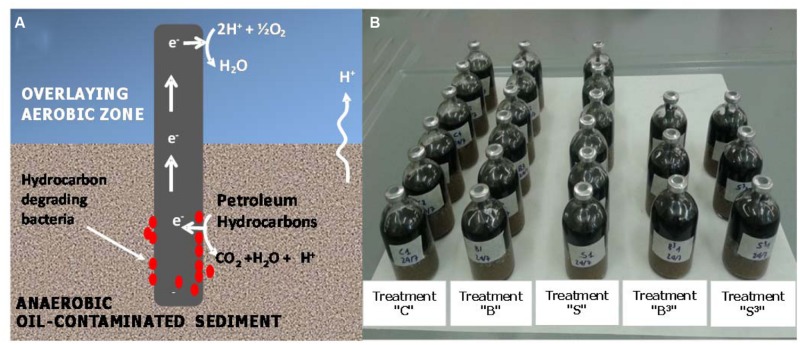FIGURE 1.
(A) Conceptual illustration of the “Oil-Spill Snorkel.” The segment of the electrode that is buried within the sediment serves as an anode, accepting the electrons deriving from the microbiological oxidation of contaminants and other reduced species. Electrons flow through the conductive material up to the portion exposed to the aerobic environment (i.e., the cathode), where they reduce oxygen to form water. (B) Picture of the experimental setup.

